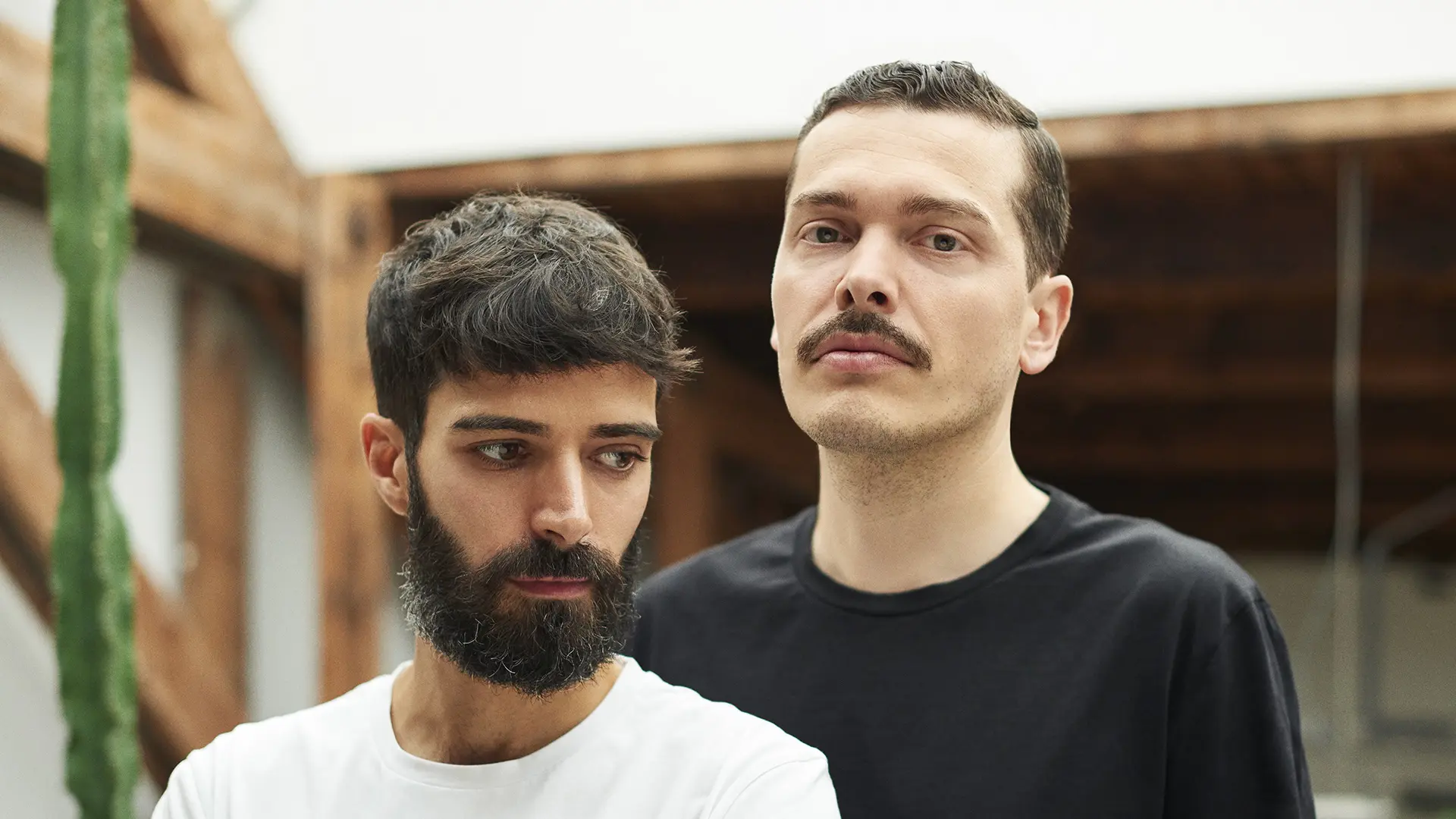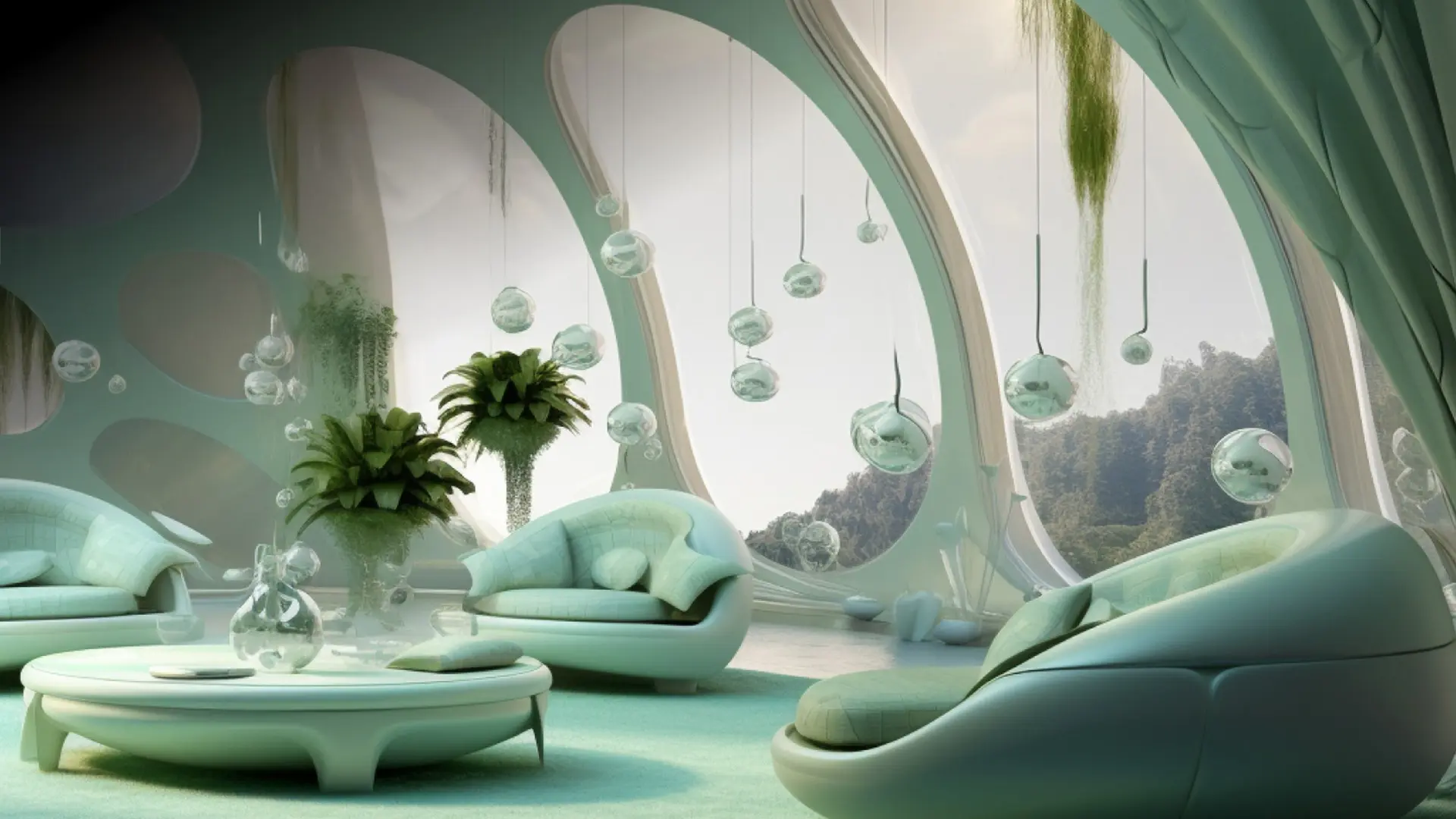After the “Drafting Futures” Arena conference space, the Salone Library, and the Corraini Bookshop, the Formafantasma creative duo – Andrea Trimarchi and Simone Farresin – has also designed the new “fair within a fair” setup dedicated to rare objects. Here’s their preview
Formafantasma and design in the age of hyperobjects
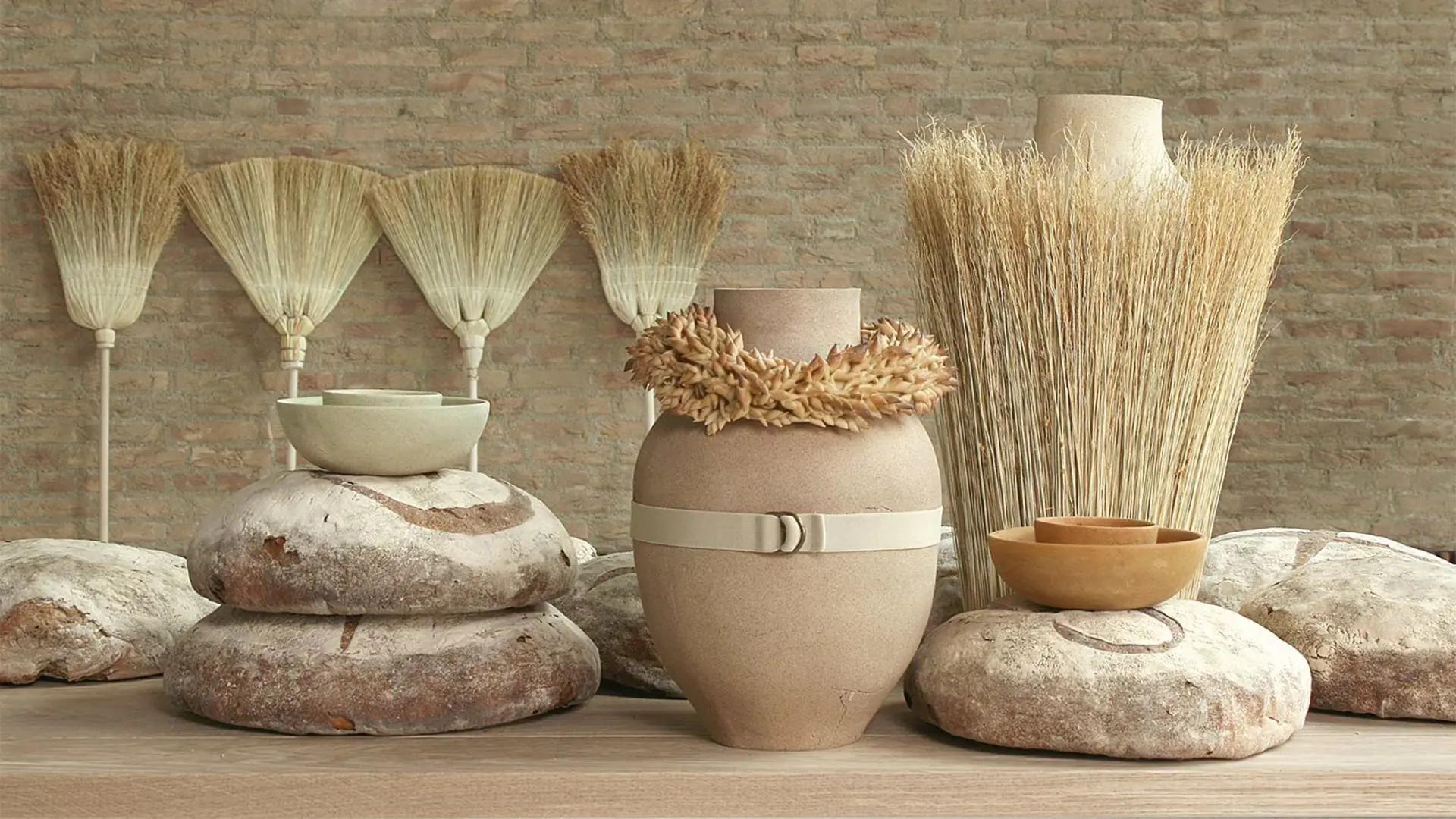
Formafantasma, Autarchy, Installation view, 2010
The book Studio Formafantasma. Il design degli iperoggetti by the critic Marco Petroni is much more than a monograph: through the work of Andrea Trimarchi and Simone Farresin he explores the urgent themes of our time and the epoch-making changes that the design world is having to cope with
From biology to ecology, from design to process, from the object to the hyperobject. The times we’re living in are seeing great changes in the ways we conceive of reality and, consequently, how we intervene on it.
The repercussions of this great mutation on the world of design are at the center of the investigation by the teacher, theorist and critic of design Marco Petroni. He sees this period of permanent crises as an opportunity to radically transform the principles guiding the world of design. In his texts, Petroni describes and comments on a wide variety of ephemeral actions, material experiments, radical practices, productive speculations... to broaden the horizon of what can be seen as design. These new prospects put design at the center of a culture at the service of eco-sustainability.
“It is [...]an epochal transition that arises from the need to create new paths for design, and secondly the possibility of building bridges and secondary roads to facilitate encounters, to free us from the univocal visions of the history of design, above all from the constant temptation to hierarchize beings and objects,” writes Petroni.
His most recent publication is entitled Studio Formafantasma. Il design degli iperoggetti. It analyzes the design achievements of the Italian designers Andrea Trimarchi and Simone Farresin, the studio’s founders in 2009.
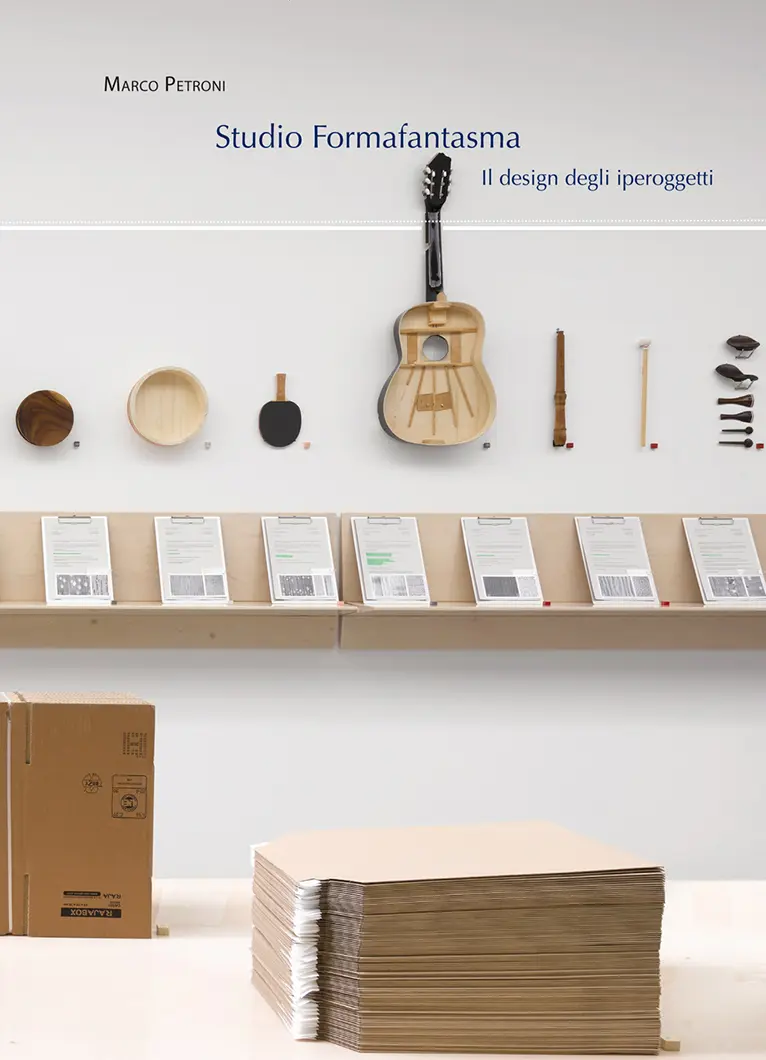
Studio Formafantasma. Il design degli iperoggetti, cover of the book published by Postmedia Books, 2022
Before going into the work of Formafantasma, however, it is necessary to focus on the second part of the title, and in particular the concept of “hyperobjects”, which Petroni borrows from the English philosopher Timothy Morton (whom the critic interviewed for Domus in 2019).
“We now live in a space where everything is entwined and interconnected, so we need to rethink cohabitation on the planet through new alliances between living and non-living, between plants, animals, fungi, bacteria, viruses and even humans. The hyperobject is this interweaving of macro and micro, of living and non-living. It is the discovery of a lost unity between humanity and nature. A composite whole that escapes individual measurement but profoundly influences individual existences. The pandemic is a hyperobject. Climate change is the supreme hyperobject,” Petroni writes. The Design of Hyperobjects epitomizes a concept that Morton illustrates in his books with a unique style, combining theory and poetry, philosophical speculations, ecological reflection and illuminating incursions into the arts and sciences.
This attitude appears clearly in the various projects by Formafantasma, which always start from critical observations of reality, and use design tools to deal with current and urgent issues.
The personal relationship between the critic and the designers began about 10 years ago, when Petroni curated a Formafantasma exhibition at the Fondazione Plart in Naples, displaying their Botanica collection (2012). Since that time (the two designers were recent graduates of the Design Academy Eindhoven), Petroni has always closely followed Formafantasma’s work. He describes their development as follows: “It is a unique story of a creative and design intensity mingling different temperatures and urgencies: art, philosophy, politics, ethics, anthropology, interacting in Formafantasma’s design work to release themselves into a new vision of design that opens up to the world superseding all sectorial interests and definitory anxieties.”
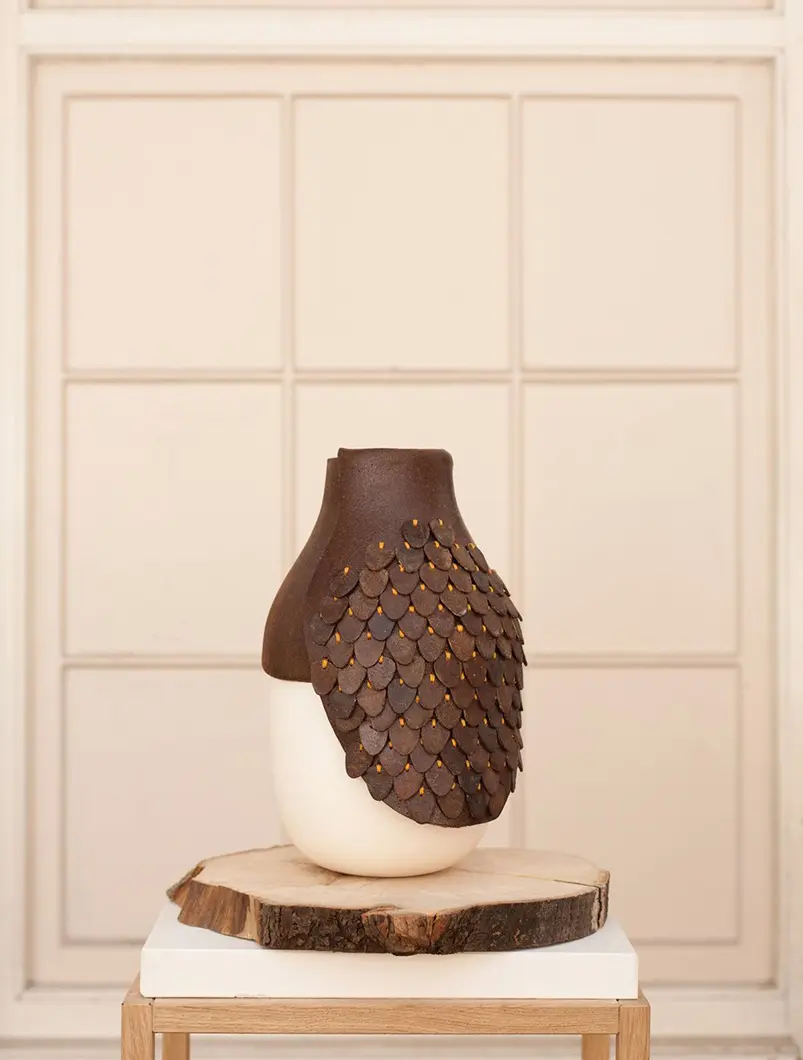
Formafantasma, Botanica III, collection view, 2011. Photo Luisa Zanzani
From their beginnings to the latest projects – such as the research “Cambio”, exhibited at the Serpentine Gallery in London – through the years Formafantasma has maintained a rare coherence in its approach, in which theory and practice are not different phases of their work: “The act of thinking takes place in a direct engagement with practices located in their ecological context made up of materials, nature, flows, forces, from the observation of the fluid character of the materials, as opposed to the solidity of materiality and extractivity,” says Petroni.
Missing from the book is a whole part of the more recent projects by which Trimarchi and Farresin explore serial production and interface with large companies in the world of design (Made in Italy and beyond). This transition – from galleries and cultural institutions to industry – is crucial to embody dynamics of another type but which always have a global relevance.
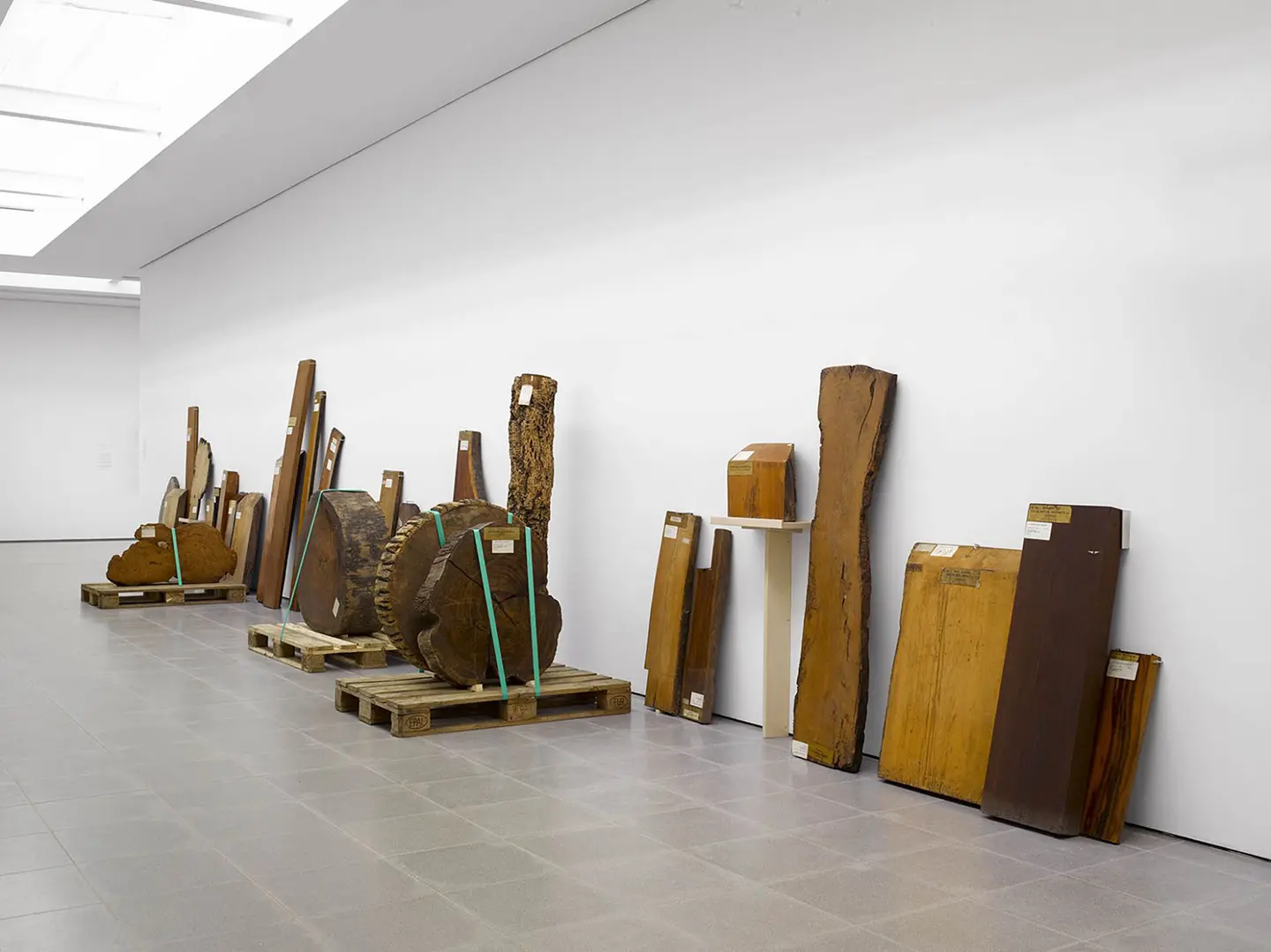
Formafantasma, “Cambio”, Serpentine Galleries, London, 2020. Photo George Darrell
We asked Formafantasma directly what this step means for them. “Working with industry is certainly slow and difficult, because we have to cope with various complex dynamics arising from stockpiling materials, logistics and production. We also believe that there is a continuity between research and the work we do with companies. For example, we are continuing the work done for “Cambio”, an exhibition created for a cultural institution, with Artek, a historic Swedish brand famous for being founded by the architect Alvar Aalto. We’ve been working with them for more than a year on a consulting project that will end with the creation of a series of objects. We looked at the company completely holistically and tried to rethink it in sustainable terms. For us the two tasks have absolute continuity. To bring about substantial changes with big brands takes 15-20 years. We’re acting as consultants to many businesses to make this transition. In addition to working on the level of the object, you have to think about general strategies, which are structural. We’re not interested in just greening the collection for companies that then have a big impact on the environment.”
Formafantasma was among the outstanding protagonists of the Milan Design Week 2022, with projects of different kinds exhibited both at the Salone del Mobile and the Fuorisalone. The works presented range from curatorship to set design, from products to research. At the fair, the studio previewed the FFQT series of taps for Quadrodesign; for Tacchini it transformed Spazio Maiocchi into an immersive cinema that investigated the role of one of the most iconic design pieces: the sofa; for Prada it curated a three-day encounter to discuss the complex relationship between the natural environment and design. The great consistency it demonstrated across such a transversal range of projects is perhaps the quality for which it is so highly appreciated and relevant even in recent years.
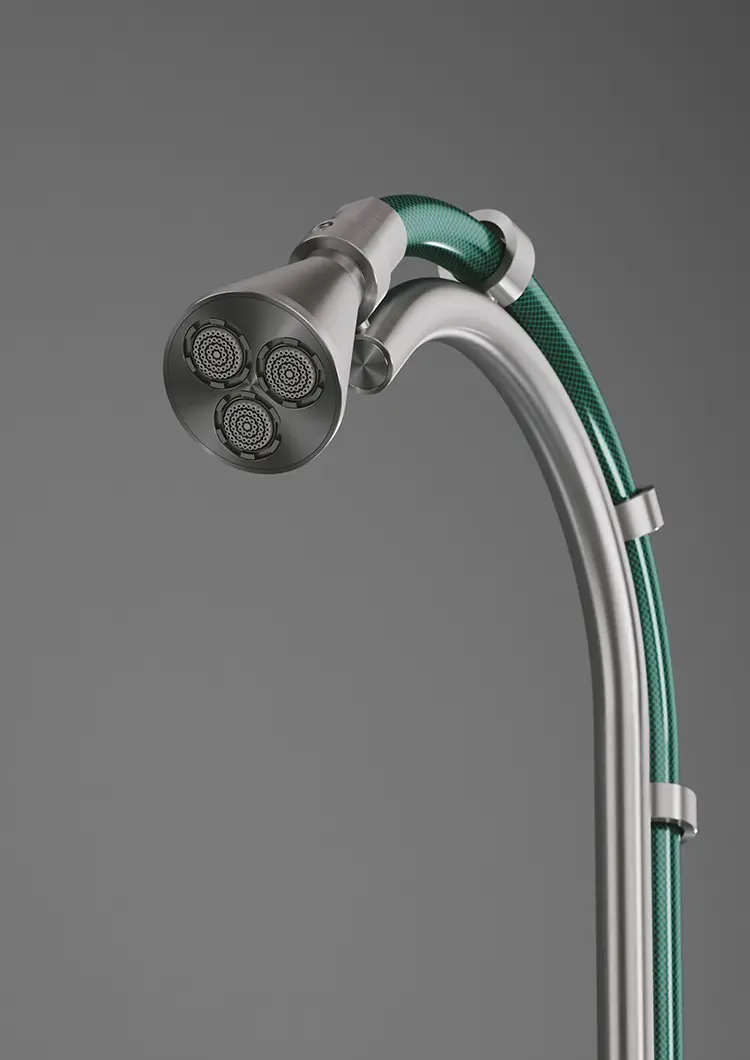
FFQT, Quadro Design, Formafantasma, 2022
Returning to Studio Formafantasma. Il design degli iperoggetti, the careful choice of the projects dealt with is bound up with the fact that this is not a book about Formafantasma, but a book about the design of hyperobjects, in which the work of the Italian firm is functional to research into “new imaginaries capable of recounting climate change, the complexities of science, the relationship between human beings and nature, all subterranean realities, yet extensive, sprawling, interconnected, disturbing and seductive.” There is more than just a biographical interest in the narrative of the works, which are placed at the service of broader argument.
We are prompted to ask ourselves: do designer monographs still make sense in the age of hyperobjects?
Title: Studio Formafantasma. Il design degli iperoggetti
Author: Marco Petroni
Postface by: Giovanni Innella
Publisher: Postmedia Books
Year of publication: 2022
Number of pages: 104
Language: Italian


 Stories
Stories




